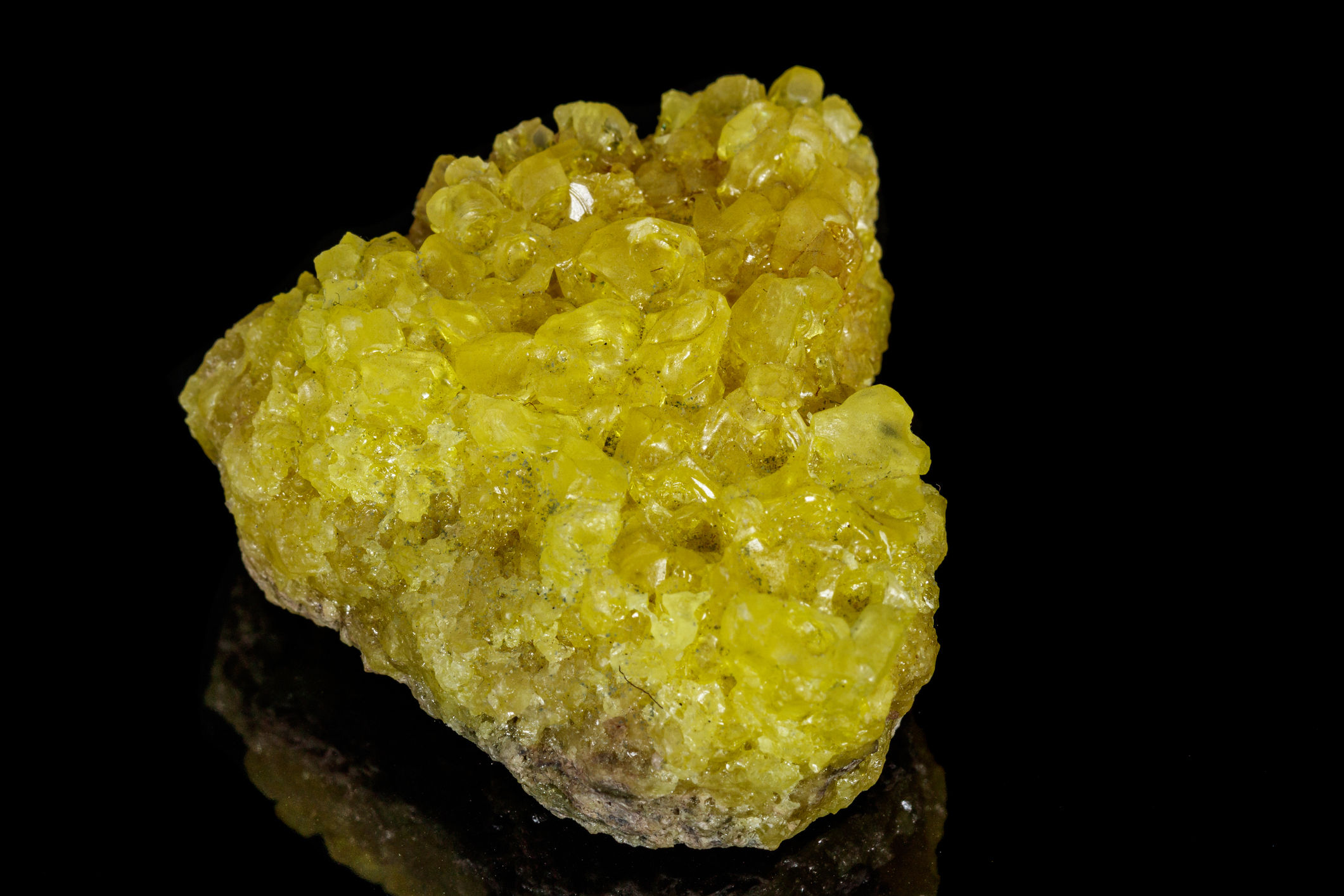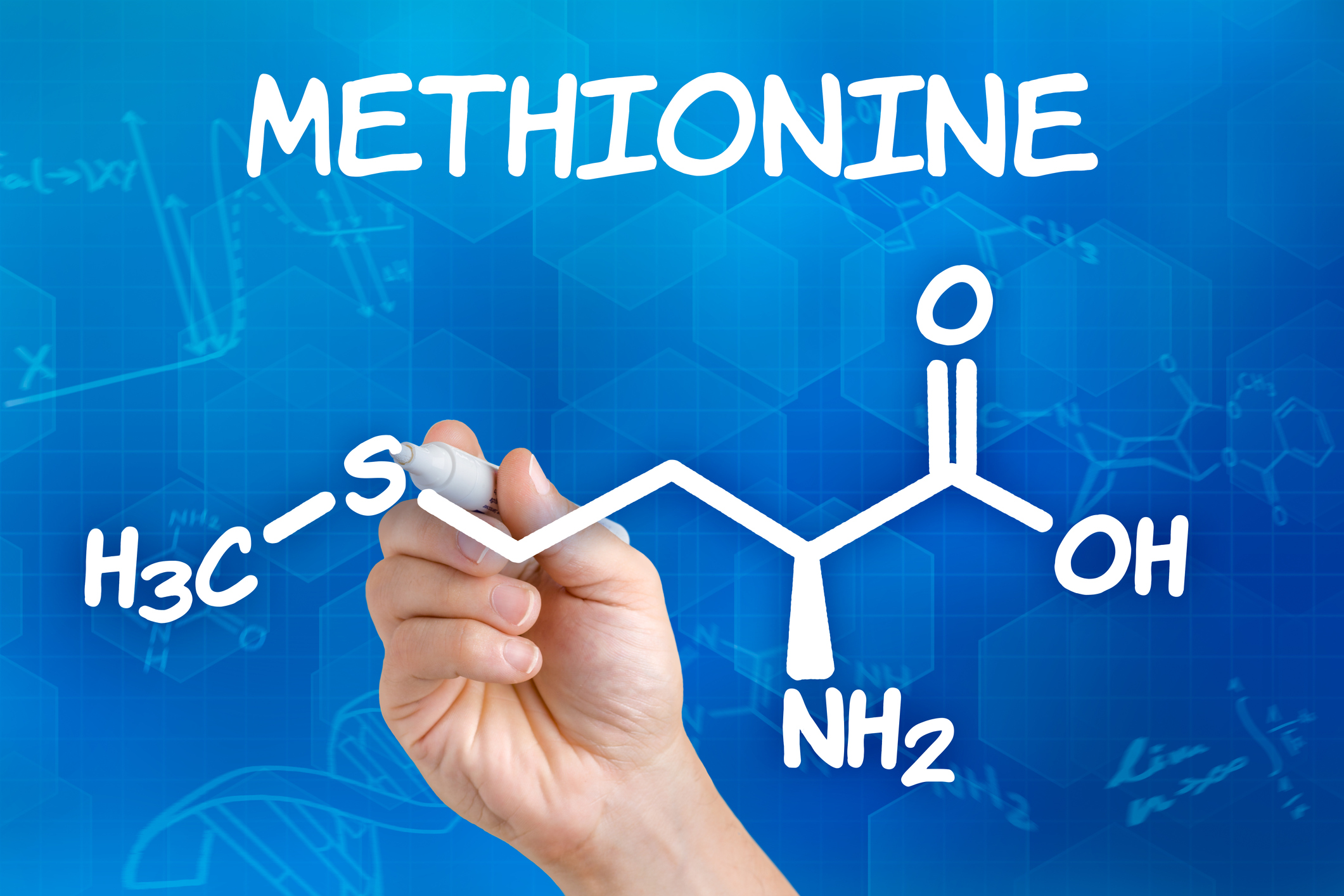- pubchem.ncbi.nlm.nih.gov - Sulfur
- ncbi.nlm.nih.gov - Are we getting enough sulfur in our diet? Marcel E Nimni, Bo Han, Fabiola Cordoba
- ncbi.nlm.nih.gov - Sulfur containing amino acids and human disease, Danyelle M. Townsend, Kenneth D. Tew, Haim Tapiero
- pubmed.ncbi.nlm.nih.gov - Sulfur: its clinical and toxicologic aspects, Lioudmila A Komarnisky, Robert J Christopherson, Tapan K Basu
- pubmed.ncbi.nlm.nih.gov - Disease prevention and delayed aging by dietary sulfur amino acid restriction: translational implications, Zhen Dong, Raghu Sinha, John P Richie Jr
- pubmed.ncbi.nlm.nih.gov - The sulfur-containing amino acids: an overview, John T Brosnan, Margaret E Brosnan
- sciencedirect.com - Chapter 11 - Minerals and Trace Elements, Martin Kohlmeier
- iubmb.onlinelibrary.wiley.com - Gastrointestinal methionine shuttle: priority handling of precious goods, Lucia Mastrototaro, Gerhard Sponder, Behnam Saremi, Jörg R. Aschenbach
- eur-lex.europa.eu - REGULATION (EC) No 1333/2008 OF THE EUROPEAN PARLIAMENT AND OF THE COUNCIL on food additives
What do we know and where in the body is it found?

Sulphur is an essential trace element that performs important functions in the human body. What are these functions? Which sulphur compounds are beneficial to our health and in which foods are they most commonly found?
Article content
What do we know about sulphur and what are its properties?
Sulphur is an important inorganic element. It is commonly found in our environment, whether in the atmosphere, water or soil. It is also an important component of biological systems - plants, animals and humans.
It is known by the chemical symbol S, which is derived from the Latin name sulphur.
Sulfur is an element in Group 16 of the periodic table of chemical elements and is found in Period 3.
The name comes from the Greek words chalkos (ore) and gennaó (to form).
Their name therefore indicates that they are ore-forming and occur mainly in the form of ores.
Elemental sulphur is a brittle crystalline solid at room temperature. It is pale yellow in colour, odourless and tasteless.
It is a non-metallic element. It is not capable of conducting an electric current, is insoluble in water, but dissolves in organic solvents.
It is quite reactive and combines with many elements. It burns with a characteristic blue flame to form sulphur dioxide, which already has an irritating and suffocating odour.
Sulphur is capable of forming many polyatomic molecules in solid, liquid and gas, i.e. it has many forms.
A tabular summary of basic chemical and physical information about sulfur
| Name | Sulphur |
| Latin name | Sulphur |
| Chemical name | S |
| Classification of elements | Chalcogen |
| Grouping | Solid (at room temperature) |
| Proton number | 16 |
| Atomic mass | 32,06 |
| Oxidation number | -2, +2, +4, +6 |
| Melting point | 115,21 °C |
| Boiling point | 444,6 °C |
| Density | 2,067 g/cm3 |
It is the tenth most abundant element in the universe.
It occurs to a lesser extent in its natural elemental form. It is much more common in compounds in which it occurs primarily as sulphides (S2-) or sulphates (SO42-).
It is a component of underground deposits - as sulphide ore (pure form), as various minerals, as part of hot springs and geysers, and in fossil fuels (oil, natural gas, coal).
It is also very often found in volcanic areas in its elemental form.
The best known sulphide minerals are pyrite (FeS2), cinnabarite (HgS), galena (PbS), sphalerite (ZnS) or antimonite (Sb2S3). The best known sulphate minerals are gypsum (CaSO4), celestine (SrSO4) or barite (BaSO4).
Sulfur has been known since prehistoric times due to its existence in pure form. Prehistoric people used sulfur as a pigment for cave paintings, and it was used in ceremonies in Egyptian religions. It is also mentioned in the Bible - in connection with the fires of hell that sulfur fueled.
The practical use of sulphur began in Egypt, where it was used to bleach cotton, or in China, where it was part of explosives.
Sulphur was discovered as an element in 1777 by the French chemist Antoine Lavoisier, and it was not until 1809 that it was proven to be a chemical element.
Today, sulphur is mainly used (up to 85 % of the total amount) to produce sulphuric acid, which is then used, for example, in the production of fertilisers, pigments, explosives, petroleum products, batteries and accumulators.
Sulphur is also used in the manufacture of paper, dyes, matches, insect and mould killers, as a bleaching agent, preservative, antioxidant or as a component of medicines (e.g. antibiotics, anaesthetics, painkillers, antiemetics, emetics or for the treatment of heart disease).

What is the role of sulphur in the body?
Sulphur is almost always present in the human body as part of more complex molecules. It does not occur in free form.
These molecules, of which sulphur is an irreplaceable part, play an important role in many physiological processes. They are essential for the health and proper functioning of the body.
Most sulphur is found in complex organic compounds such as amino acids, proteins, enzymes or vitamins. Sulphur occurs in many configurations in these compounds.
The most common amino acids that contain sulphur in their structure are methionine, cysteine, homocysteine and taurine. Others include cystine, cystathione or cysteic acid.
The highest proportion of sulphur of the total amount of sulphur in the body is found in proteins, the building blocks of which are sulphur-containing amino acids.
Of the vitamins, the most important are thiamine (vitamin B1) and biotin (vitamin B7). Sulphur is also found in other organic compounds such as lipoic acid, coenzyme A, glutathione, chondroitin sulphate, heparin, estrogens or fibrinogen.
The basic biological functions of sulfur, whether in its own form or as part of more complex molecules, include:
- It is a building block for amino acids, vitamins and other important organic compounds.
- It is involved in the structure and function of proteins (via amino acids as the basic building blocks of proteins).
- It influences enzyme function and metabolic processes.
- Promotes strength and resistance of hair, nails, skin and cartilage.
- Has antioxidant effects.
- Has antimicrobial and antifungal effects.
- Has a beneficial effect on brain and nerve development and function.
- It has an effect on hormone function.
- When used externally, it slows down the formation and multiplication of skin cells (this effect is used in the treatment of various skin diseases).
The most important sources of sulphur for the body
The most important source of sulphur for humans is food. Through food, sulphur is taken up in the form of more complex compounds (mainly amino acids and vitamins) or in simpler forms - as sulphites or sulphates.
Many sulphur compounds are toxic to humans (e.g. hydrogen sulphide), not only when taken orally but also when inhaled.
There are therefore only a limited number of sulphur compounds that are safe and necessary for the human body.
The largest proportion of dietary sulphur comes from two amino acids - methionine and cysteine. These amino acids are found in proteins of both plant and animal origin.
Methionine is an essential amino acid that the body cannot make on its own. Therefore, we depend on its intake in the diet.
In the case of cysteine, the situation is somewhat different. It is not an essential amino acid, because cysteine is formed in the body in the process of methionine metabolism.
The physiological need for cysteine is satisfied not only by dietary intake of cysteine but also by increased intake of methionine, which is subsequently metabolised to cysteine.
The daily requirement for sulphur in man is adequately met if approximately 13 mg/kg of these amino acids are consumed in the diet.
From a nutritional point of view, methionine alone can also supply the body with all the sulphur it needs.
Sulphur also enters the body through its inorganic compounds present in the diet - i.e. sulphates or sulphites. These, however, are only a negligible source of sulphur for the body.
Their absorption in the gastrointestinal tract is low and therefore they are rarely included in the required daily intake of sulphur.
Foods of animal origin rich in sulphur are animal proteins, eggs, dairy products, meat, fish and seafood.
Of the plant foods, the most important are vegetables (onions, garlic, leeks, chives, cabbage, kale, cauliflower, broccoli, watercress, mustard, horseradish, radishes), fruits (raspberries), nuts and wheat germ.
Sulphur is also found in mineral waters or in small amounts in tap water.
Sulphur can have a characteristic smell in some protein foods that resembles rotten eggs.
There are no defined recommendations for sulphur and its optimum daily intake. Intake of sufficient amounts of sulphur-containing amino acids ensures sufficient and necessary amounts of sulphur for proper functioning of the body.
In the food industry, we can also see the deliberate addition of sulphur to foods during processing.
This is the addition of sulphites, which act as preservatives, antioxidants or bleaching agents in food.
Usually, sulphites are added to foods such as:
- Fruits and vegetables in raw, processed, frozen, dried or canned form, in juices, jams, marmalades or spreads
- Confectionery, syrups and sweeteners
- Cereals and cereal products, nuts
- Meat products
- Fish and seafood
- Herbs and spices
- Beer, wine, alcohol and flavoured drinks
Tabular list of permitted food additives
| E number of additive | Name of additive |
| E220 | Sulphur dioxide |
| E221 | Sodium sulphite |
| E222 | Sodium hydrogen sulphite |
| E223 | Sodium disulphite |
| E224 | Potassium disulphite |
| E226 | Calcium sulphite |
| E227 | Calcium hydrogen sulphite |
| E228 | Potassium hydrogen sulphite |
Sulphites are also included in many medicines or food supplements.

Sulphur - from intake to excretion
Absorption
As already mentioned, almost all sulphur enters the body via two amino acids - methionine or cysteine.
In the case of methionine, the primary site of absorption is the small intestine. Here, methionine is absorbed by specific transporters.
Methionine is one of the amino acids with the highest rate of absorption in the digestive tract.
The proportion of methionine absorbed is relatively high. However, approximately 20-30 % of the amount is metabolised directly during absorption to form sulphates.
Cysteine is absorbed in the environment of the small intestine and also via specific energy-dependent transporters.
Absorption of inorganic sulphur compounds in the gastrointestinal tract, i.e. sulphates or sulphites taken up in the diet or formed by amino acid metabolism, is low.
Most sulphates up to 1 gram are absorbed in the small and large intestine. Absorption is via the sodium-sulphate transporter.
Distribution
Sulfates are fourth on the list of the most abundant anions in human blood.
Their concentration in the urine is around 300 µmol/l. Dietary intake of sulphates or sulphur-containing amino acids increases their levels sometimes by a factor of two.
The usual concentration of sulphites in the blood is 5 µmol/l, but it may be in the reference range 0-10 µmol/l.
In standard blood tests, the level of sulphur or its compounds is not determined.
Sulfur is transported from the blood back into the tissues and cells of the body via several types of carriers.
Sulphates or amino acids containing sulphur are also able to pass through the placenta in both directions. This ability to pass both ways is essential both to maintain an adequate supply of sulphur to the fetus and to prevent harmful excesses.
Sulphur also passes through the blood-brain barrier in the form of cystine, which is subsequently degraded to sulphate in the brain environment.
Metabolism and storage of sulphur
Since sulphur is usually ingested in the diet in the form of more complex molecules, it is metabolized or broken down into simpler molecules in the body.
In general, sulfur is metabolized by oxidizing sulfur in the form of sulfides S2- (in this form it is present in more complex organic compounds) to sulfites SO32- and further to sulfates SO42-.
The sulphates can be stored in tissues bound to ascorbate, thus forming sulphur stores. However, these sulphur stores are very small. Subsequently, the sulphur is released from its binding to ascorbate by enzymes according to the needs of the organism.
The metabolism of methionine occurs through a series of processes that are controlled by enzymes. The end result of its metabolism is the formation of sulfate.
However, in addition to sulphate, homocysteine, cystathione, cystine, taurine and also cysteine are formed during its metabolism. These are the products of methionine metabolism.
Cysteine is not an essential amino acid. Therefore, the source of cysteine is not only food itself, but can also be formed in the body due to methionine.
The cysteine and methionine molecules themselves are not stored in the body. Their fate is that they are oxidised to inorganic sulphates or bound to glutathione (a tripeptide composed of three amino acids which has strong antioxidant properties).
Excretion
Sulphur and its compounds are mainly excreted from the body in the urine.
Each day, humans excrete a total of approximately 1.3 g of sulphur in the urine. If dietary intake of sulphur is higher, the proportion of sulphur excreted increases.
Sulphur is excreted in the urine in the form of organic esters (about 15 %). The remaining volume loss is in the form of sulphates.
The rate of sulphur excretion by the lungs is also influenced by the level of vitamin D in the body.
Other routes of sulphur excretion, e.g. faeces, are negligible (< 0.5 mmol/day).

What is the consequence of deviation from physiological sulphur levels?
As with other minerals or trace elements, it is important to maintain sulphur at levels that are beneficial and safe for the body.
The pathological consequences of a deficiency of sulphur in the human body alone have not been defined and are therefore unknown.
Some sources have reported that brain disorders and connective tissue damage have occurred in patients with a defect in specific sulfur carriers.
Excessively high levels of sulfur in the body can cause loss of minerals from the bones and subsequently increase the risk of osteoporosis.
Exposure to high doses of sulfur can trigger asthma attacks and skin allergic reactions such as hives.
Sulfur also has many compounds that are toxic to humans. An example is sulfur dioxide.
Exposure of the body to these compounds, for example in the form of air pollution, causes inflammation of the upper respiratory tract, narrowing of the airways and lung disease.
The main and largest source of sulphur is dietary intake in the form of the sulphur-containing amino acids methionine and cysteine.
Therefore, the symptoms of their deficiency or excess can be partly attributed to sulphur.
The primary cause of methionine and cysteine deficiency in the body is a significantly low dietary protein intake. Unless there is an associated problem with the absorption or metabolism of these two amino acids, the deficiency can be addressed by increasing their intake.
However, congenital defects in the absorption or metabolism of these amino acids are also known. Thus, their excessive or insufficient levels in the body are not directly dependent on dietary intake.
Congenital defects of absorption include, for example, various malabsorptions.
Metabolic disorders include disturbances in the function of various enzymes involved in the metabolism of methionine and cysteine. This ultimately leads to the accumulation or absence of their metabolites in the body.
In general, these disorders are manifested primarily by:
- impaired mental function
- delayed development of the individual
- seizure disorders
- movement disorders
- blood disorders such as red blood cell and platelet deficiencies
- excessive accumulation of certain metabolites in the urine
- formation of kidney and urinary stones
An important disorder related to impaired metabolism of sulphur-containing amino acids is a disorder called homocystinuria.
It arises as a result of deficient function of the enzyme cystathionine synthase, which facilitates the conversion of homocysteine to sulfur.
Homocysteine thus accumulates in the blood in large quantities and causes health problems. It is also excreted in large quantities in the urine.
Since homocysteine is a precursor for the formation of cysteine, its production is reduced in this disease.
Homocystinuria causes eye damage (myopia, clouding and displacement of the lens), bone damage (osteoporosis, scoliosis, fractures) or nervous system disorders (delayed development, intellectual disability, psychological disorders).
Homocysteine is also an important contributor to cardiovascular disease, specifically deep vein thrombosis, pulmonary embolism or stroke.
Some studies have also linked methionine to the development of certain cancers. This is because the growth of some cancer cells shows a dependence on this amino acid.
Interesting resources
Related










